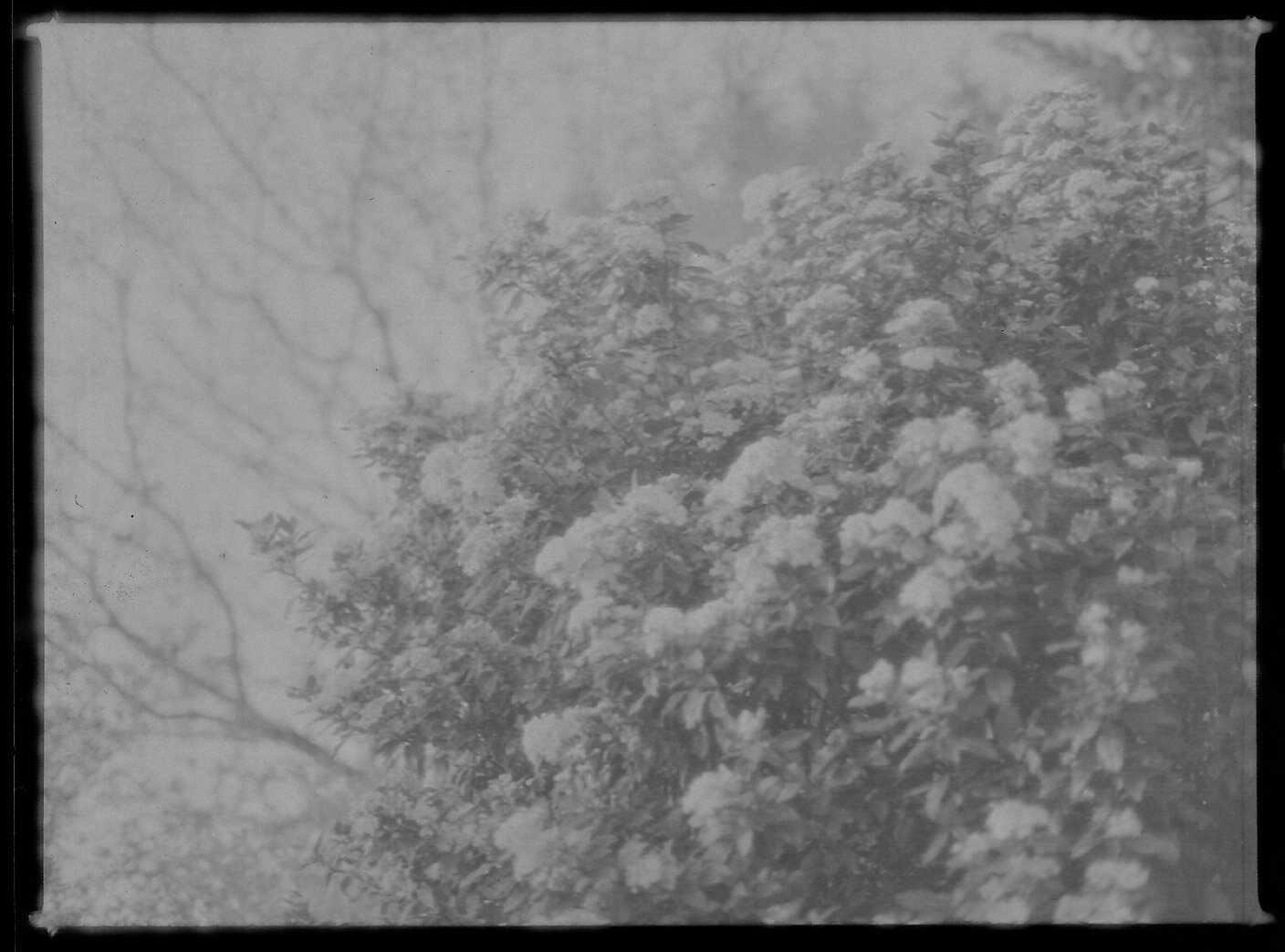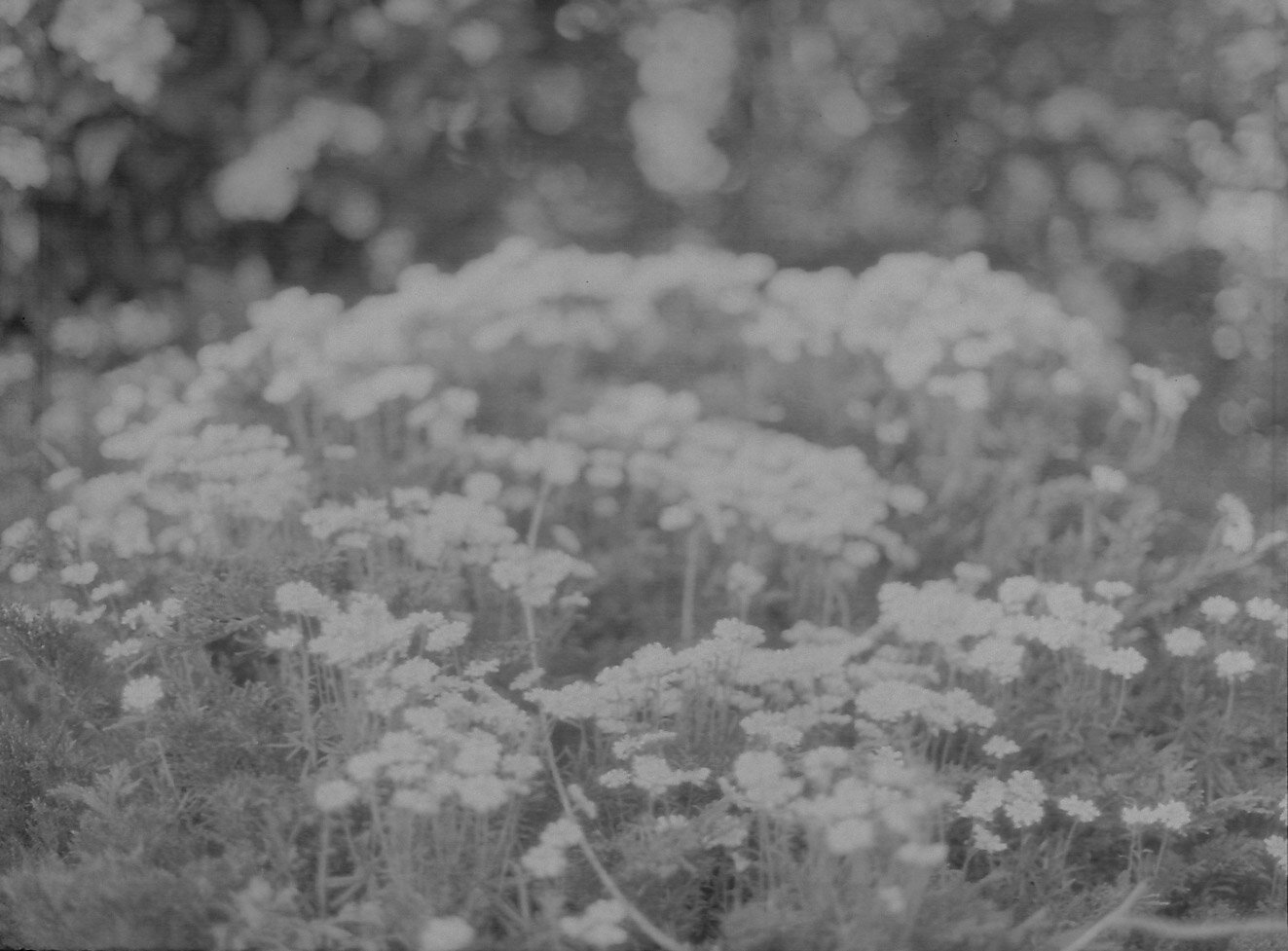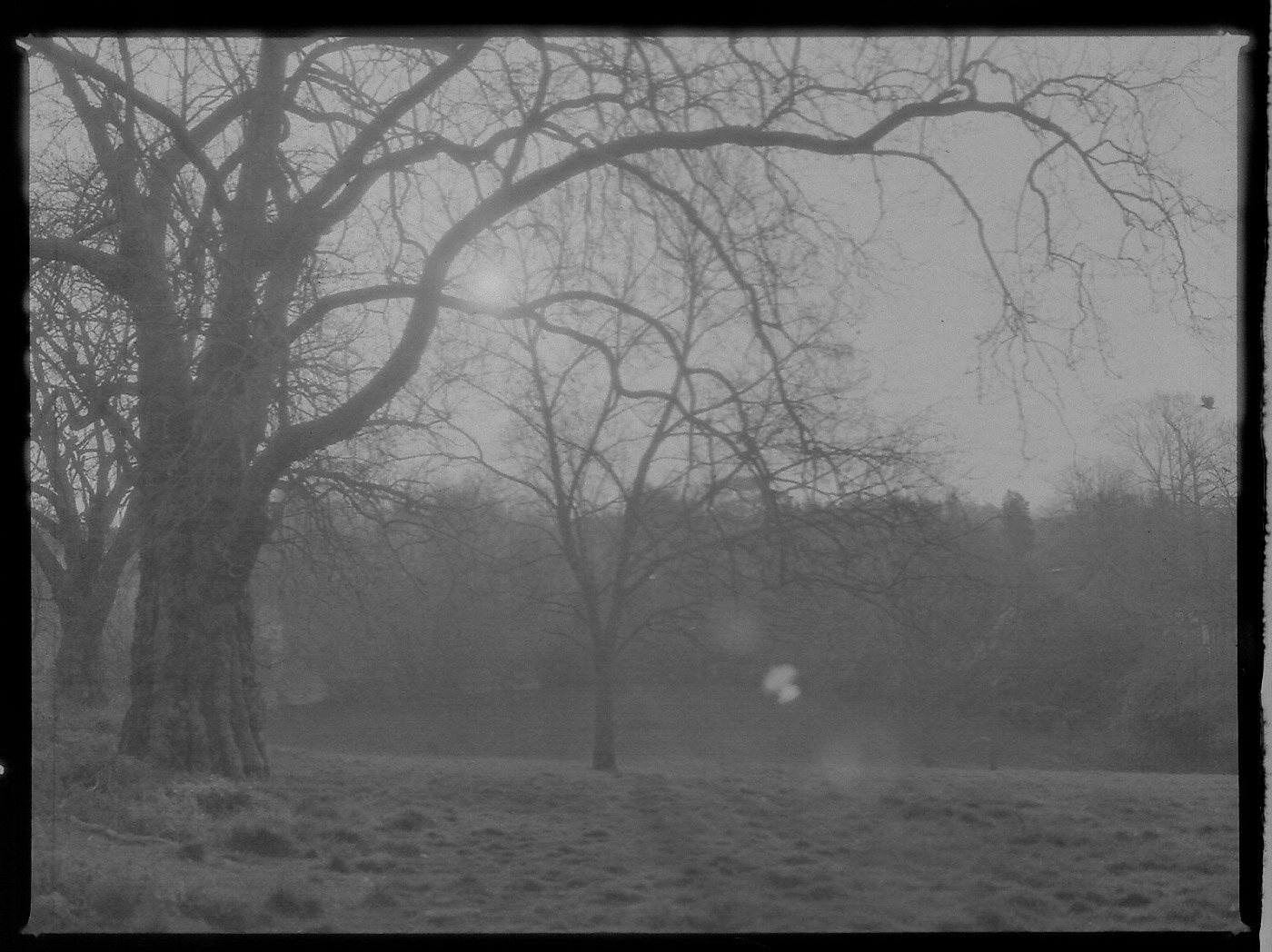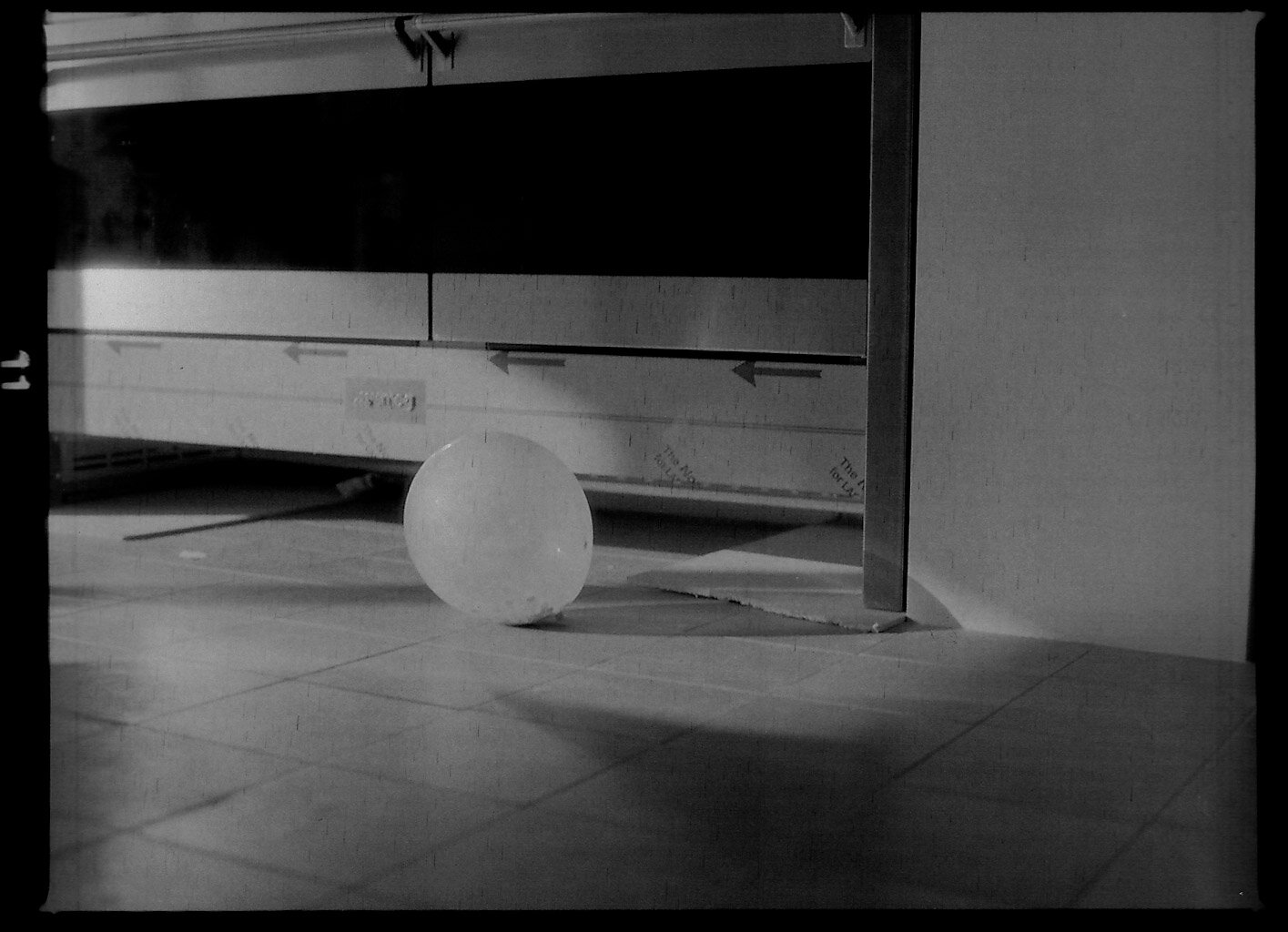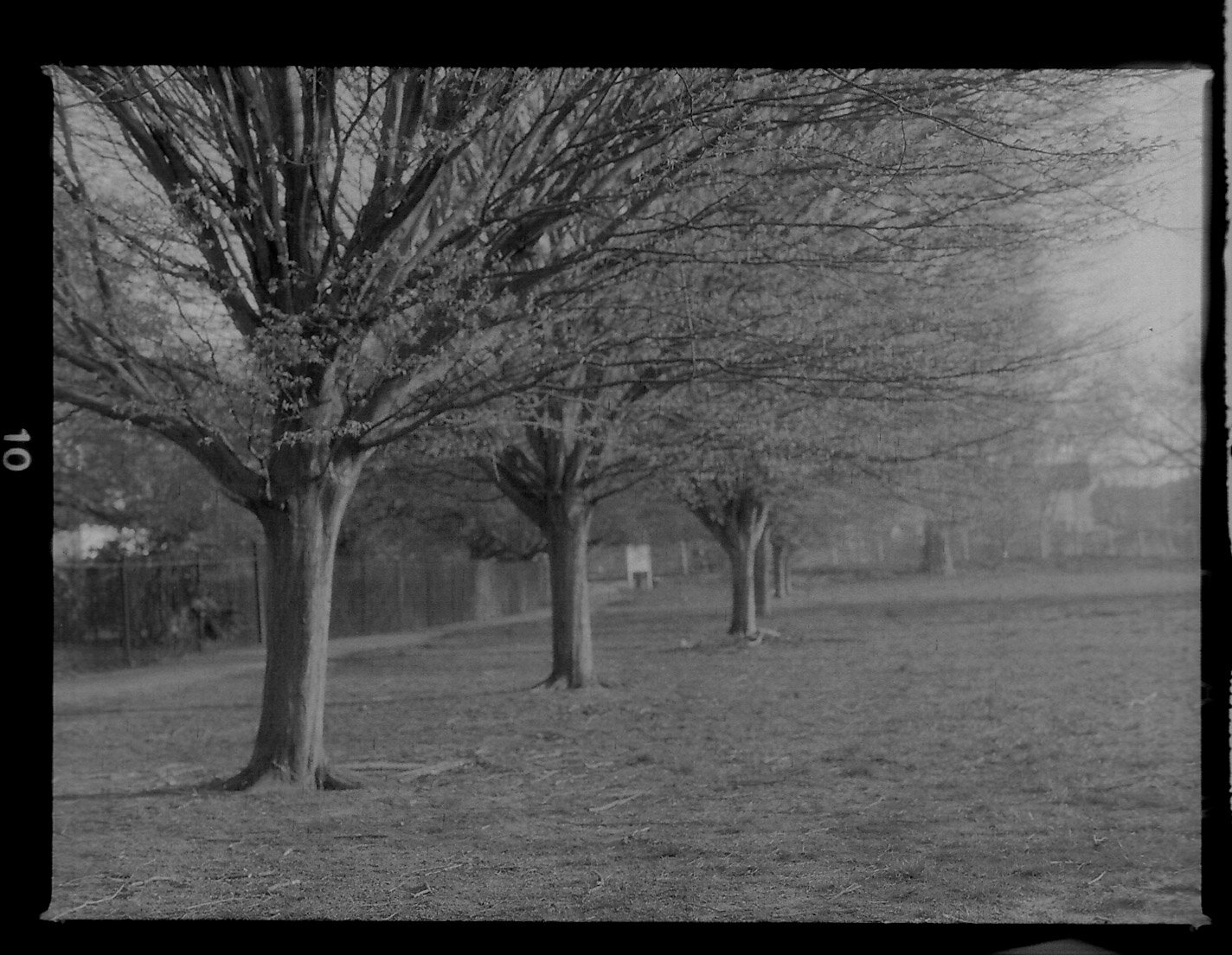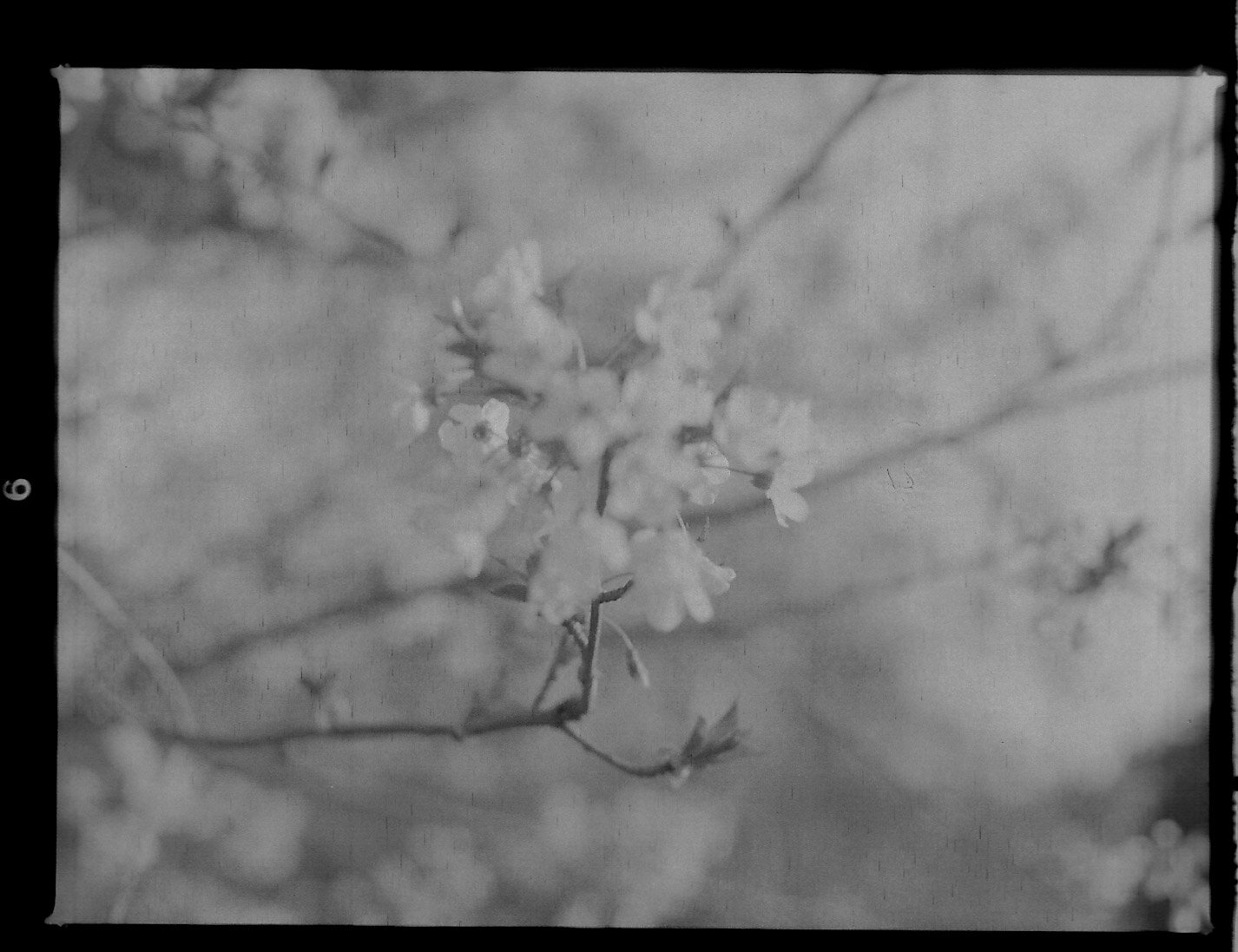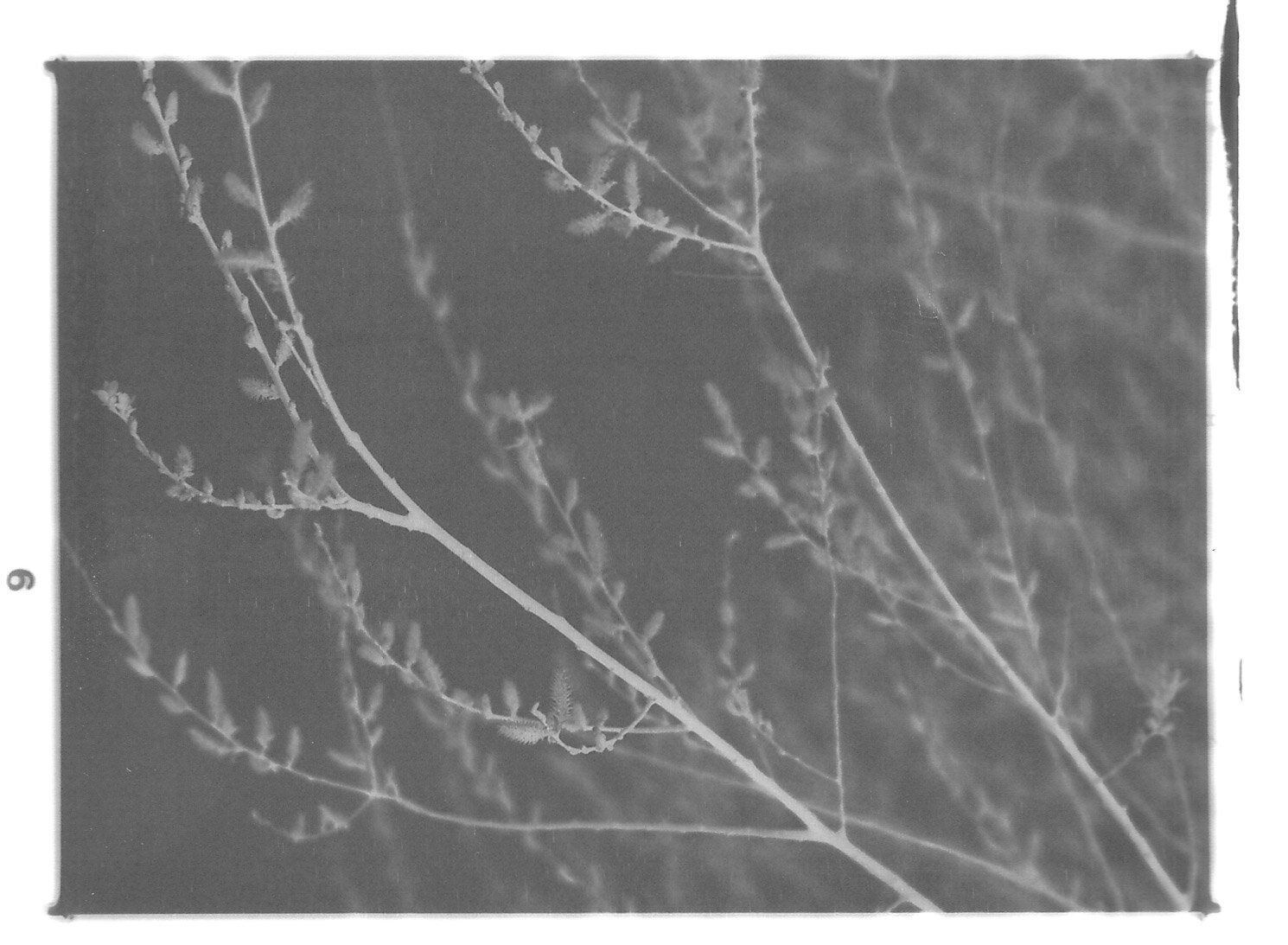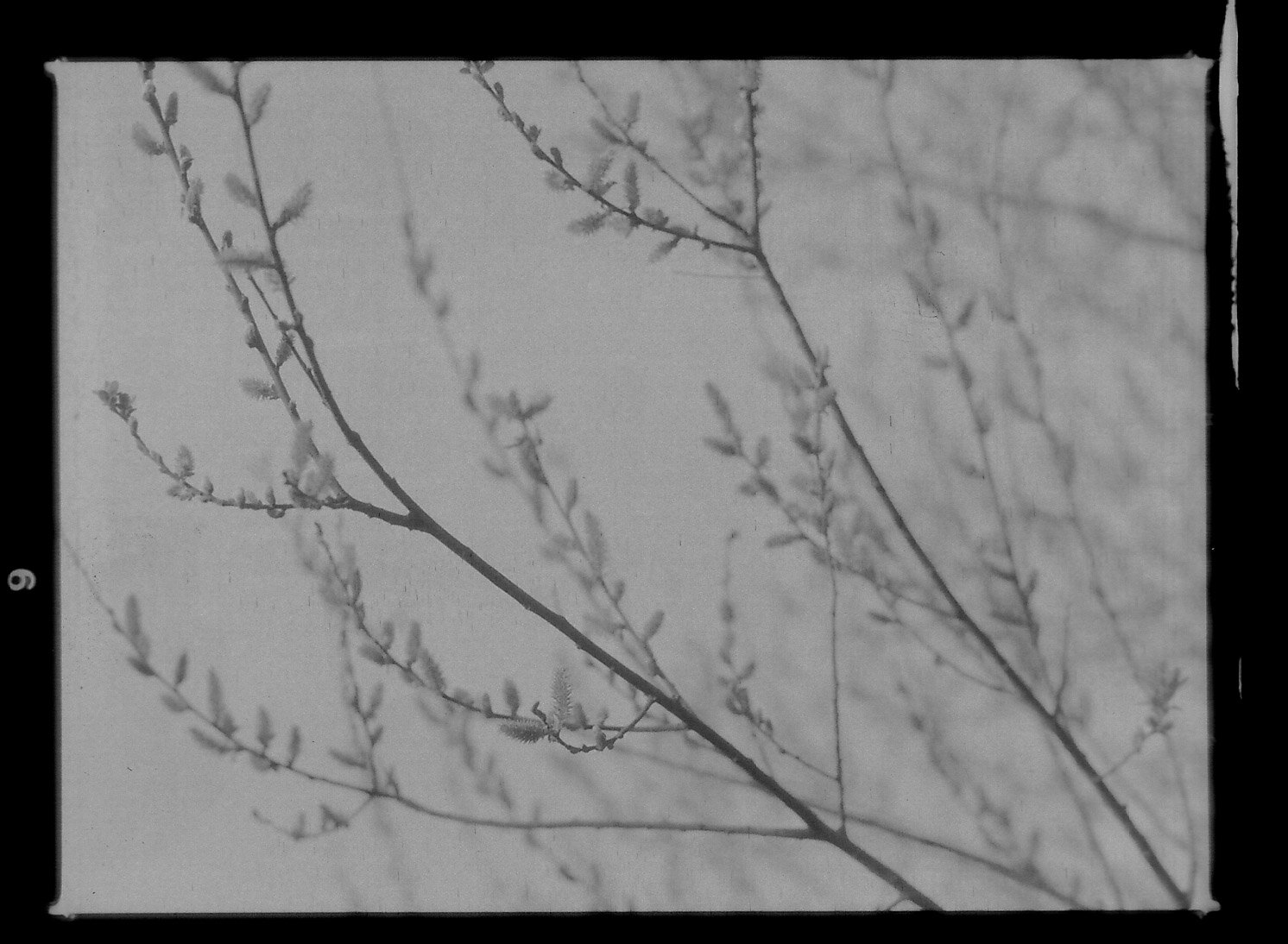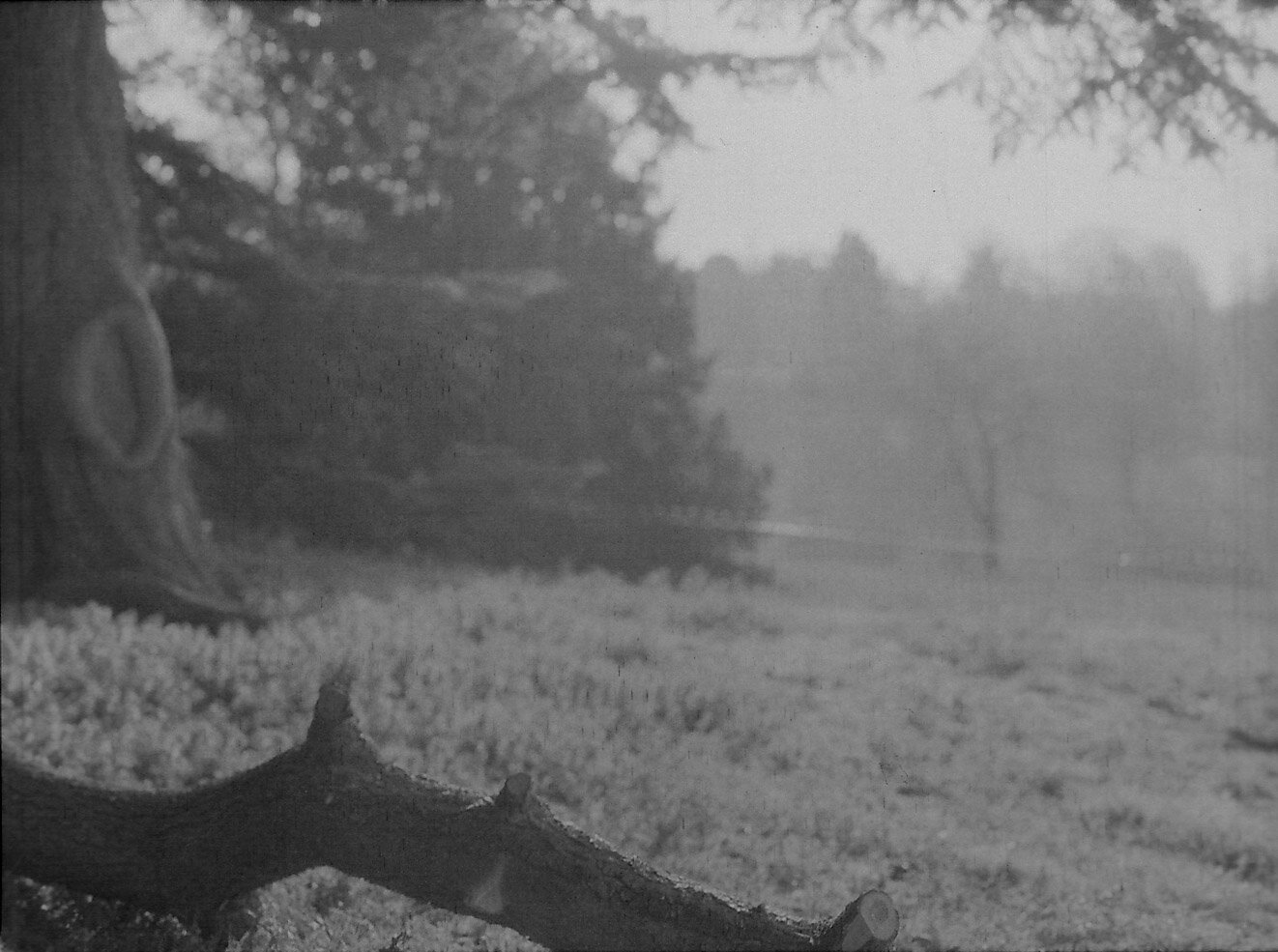Printing with Salt and Silver Nitrate
I go back to the beginnings of photography to explore salt printing, a method that uses chemicals in contact printing to make photographic likenesses and prints
The Idea
For a few months I’ve been attending a local photo club, Photo Fusion in Brixton, which brings together photographers who are making beautiful art from cameras. Once a month on a Saturday some of us get together and discuss projects that are in flow. A few of these have mentioned salt printing, and I was interested to find out more.
I was planning to do a course, but Corona Kicked In. So instead I did a bit of research on the Internet. This article got me started. As a side note, I am finding a lot of great material on Lomography.com when I Google random photographic techniques. It’s either got a great SEO team or great content (or, conceivably, both).
Things You Need
Based on the article, I acquired the list of things needed. As usual, eBay fared better than Amazon for sourcing random chemicals. The big ticket items are really silver nitrate, citric acid and sodium thiosulphate.. The latter are quite cheap and you get quite a lot for your money; my silver nitrate however was £20 for 20g, so a more considered purchase. You might also want some clean decorating paintbrushes, a shallow plastic tray (I had one I had previously used for marbling inks) and some glass jars for storing the solution in. You could also do with a piece of glass big enough to put over your prints while developing, though I found that this did inhibit the colour somewhat. You might also want some plastic gloves, as my hands have been covered in black stains for over a week, and plenty of kitchen roll for wiping down the glass, digital negatives, etc.
That’s for the actual printing process. You need to make digital negatives as well (unless you happen to have some large format negatives lying around that you want to use). For the first batch I used this digital transfer film in my inkjet printer, but you can also buy OHP transparency sheets that are around half the price. They are pretty simple to make, and I used this guide: https://parallaxphotographic.coop/how-to-make-digital-negatives/
Choosing the Right Images
It’s important for this process to choose the right sort of images, with the correct amount of contrast. I had a digital negative of a picture of my son, an agapanthus flower and of a shot I took in the Tate Modern last year. These were sample images that I wanted to try out and that I thought would look quite good in the medium.
Choosing the Right Day
You need light and sun for this process. And because it’s messy as Hell, really you want to be outside with that tub of black-staining evil silver nitrate solution. Which means, in the UK, picking the right kind of day for it (ie no rain). And too sunny can be a bad thing too. My first Tate contact print I left for far too long in the sun (with this technique less - exposure - is definitely more).
The Basic Process
Mix up your chemicals as instructed in the article. Soak your cardboard or thick paper in the saline solution and let it dry. Then paint on the silver nitrate solution and let it dry in a dark place (I used the shed). Pop on top your digital negative, cover with glass and expose in the light for the relevant time. You then need to wash the paper and soak in sodium thiosulphate solution for around 5 minutes, to fix the chemicals. Missing this step means a black picture, in time. So the process is actually pretty simple and easy once the prep has been set up.
Things I Still Need to Work Out
Exposure time. Especially on more delicate prints like the one I took at the Tate Modern, less exposure is better and especially in strong sunlight. The prints get darker as well the older they are, so underexposing at first is not a bad idea
Card stock. There is a lot of liquid involved in this process and normal paper isn’t going to work (I did try on some.) For my test prints I used a stack of white card from the Pound Shop, but if you are getting wise to this process it would obviously be better to use higher grade materials
I soaked my card in saline as per the instructions, but actually I found it left a few air bubbles. So next time I will try painting on the saline with a thick paintbrush
I found I got “splots” on my prints - and later found these were acquired in the fix bath. So I need to do some trials to work out how to eliminate these. I’m not sure whether it’s a solution issue, a paper issue or what - but I might try painting on the fixer rather than soaking the card in it.
My prints are very “brown”. I know that’s kind of the point, but they seem browner than others I have seen. So I may also try diluting the silver nitrate solution a little more with some more citric acid solution, or using a smaller paintbrush to apply it more sparingly to the card
I may also try this technique on cheap canvases from the likes of The Works (or indeed the Pound Shop)
So there’s lots to learn about this old technique, as with any new skill, but it’s fun to go back to the beginnings of photography and merge them with the technology that we have now.
Developing Film at Home
I explore developing film at home using black and white chemistry and a Lab Box from Ars-Imago
Coronavirus stops analogue play!
I had managed to get a couple of rolls of medium format film developed by the shop local to where I work but, shortly before lockdown, I went there and they advised against taking more film as they couldn’t be sure it would come back to me any time soon. I figured that being at home might be a good time to learn some new photographic skills and, in any case, developing film at home would save me money and time in the long run. So along came the next project.
Research
I had a vague idea about film development having done a course many years ago before digital photography really took off. So I got a book from Amazon called The Darkroom Handbook, which is a bit old but told me what I needed to know. Following this acquisition I then ordered various chemicals - these are, for some reason, much more available on eBay than on Amazon.
The Chemistry
For black and white photography you basically need four liquids:
Developer (this develops the image on the exposed film)
Stop bath (this stops the developer chemicals from working at the required time)
Fixer (this fixes the developed image and stops light fade)
Wetting agent (this helps to prevent streaks on the dried film - I wonder if you could use dishwasher rinse agent for this purpose if you didn’t want to fork out for wetting agent)
After acquiring these I found out that there are modern solutions that do all of these at once bar the wetting agent bit. But heyho, might as well do it the more complicated way…
I was a bit bewildered by which chemistry to buy, especially for the development part of the process. There are loads of different chemistry types depending on the manufacturer and ASA of the film, the film type etc. After reading the descriptions of the ones available I went for Ilford DDX, which seemed to have the best features overall for the speed of film I generally have (which tends to the higher speed, grainier end).
Hardware
Now obviously with all of these chemicals to play with, I was going to need some other equipment as well.
Three measuring cylinders (or “graduates”) - up to 600ml volume is useful
Clips to hang my drying film from, and to weight it at the other end to stop curling
A thermometer to test the temperature of the chemicals
That’s it.
Oh, apart from the actual apparatus to develop the damn film in.
The Daylight Loading Tank
I haven’t got the wherewithal or the desire to create a darkroom in my house at this stage. We haven’t even finished decorating the house extension so a darkroom feels like a low priority. In addition, despite the analogue beginnings, the majority of my photographic uses are digital and I don’t want to spend money on enlargers and that kind of paraphernalia. What I really wanted was a daylight loading tank so I could develop my film without the need for fiddling in the dark.
Loading medium format film into the Lab Box
You can buy quite cheap daylight loading tanks for 35mm film but I decided to splurge on a piece of equipment that would also do 120mm film. The Bum Chum was duly purchased! Its real name is The Lab Box by Ars-Imago and is a splendidly expensive piece of crowd-funded plastic that allows you to load film of both 35mm and 120mm varieties without them seeing the light of day. You pour and drain the chemicals through the top and it is a very compact unit that doesn’t take a whole heap of space in the cupboard when it’s not being used.
First Attempt
So last night I attempted my first roll of film. I used a roll of exposed Svema 32 film, which is very very expired having seen its best before 1994. The upside to this approach is that it doesn’t really matter if I ruin the film; the downside is that I can’t tell if I have ruined the film or if it has ruined itself by virtue of being old.
The Lab Box people have kindly included QR code video tutorials on their website, which made it relatively easy to follow the initial assembly steps for the box and to load the film. As you can see from the photo above, you feed the backing paper out of the box and pull it, while the film becomes enclosed in a light-proof chamber below. You then attach the film end to a secure clasp attached to a spool, which you wind into the developing chamber.
The chemistry was another matter. What the hell do you do with film that has no reference on the agent instructions and what is the best way to develop knackered old film?
The room temperature was around 22C so I guessed at 12 minutes of developer and 7 of stop bath. You basically just crank the handle to agitate the film in the liquid the whole time and, in true Blue Peter style, I had pre-prepared the liquids in advance in their respective measuring cylinders.
Unfortunately the results were rubbish! Looking at the processed film there was so much residue from delaminated film (if that’s the right term), and I hadn’t used the developer for long enough so the successful images were very faint.
Second and Third Attempts
Buoyed by my efforts in Round One, I set to developing two more films. One was another Svema 32 effort (so I didn’t hold out much hope for this) and another was a new roll of Foma Retropan 320 film.
The moral of this story is read the bloody instructions. These films I had to throw away because I inserted the canister the wrong way up, and when I pulled the backing paper it spooled the film in the wrong direction meaning that I had to open the box to extract it. Not once - but twice!!
Fourth and Fifth Attempts
I took my daily allowed walk in the local park at 7am, duly avoiding neighbours and other interested parties, shooting a couple of rolls of film as I went. Again, to make trials consultant I used Foma Retropan 320.
Following the same instructions as the night before I developed these films and was pleased to see that they came out. I extended the development time a bit for each film successively, as the effectiveness of the developing agent wears off a bit each time.
The Results
See the results below. They are my first attempts and I am quite pleased with them.
I need to play more with contrast and increase the development time I think (or maybe just lessen the in-camera exposure), and obviously I’ll play with different film types. I’ve also seen a tutorial on developing with coffee and baking soda, which will make a fun alternative process which also reduces the environmental impact of the chemicals being used. I’d also like to use the techniques with portraiture rather than with random pictures taken in Streatham.
What strikes me the most, though, is that despite the initial outlay on materials, this is a much quicker and cheaper process than going to the shop. It took me about 50 minutes to develop the film (and then a further hour or so scanning the negatives as tiffs and inverting them in Affinity). There’s no question that film photography is a much more expensive hobby than digital but with techniques like this at least the costs can be brought down.
Thanks coronavirus. I owe you one. You don’t have many advantages but you have given me a new angle to my hobby.
The Rare World of the 127 Film
I develop 127 film from the Yashica 44 medium format camera bought from eBay last summer, and look at the results of this almost lost but entirely-new-to-me film format
If you cast your eyes back to July last year, I wrote a post about the old Yashica 44 medium format camera that I picked up off eBay. I didn’t mean to buy a camera that only took 127 film; it was a novice’s mistake borne out of ignorance and possibly inattention to detail.
It turns out that very few places sell 127 format film these days. Analogue Wonderland do, as do Nik & Trick - and I have managed to acquire a few expired rolls of Ilford from eBay. It’s expensive too, at between £12 and £15 a roll of 12 exposures, and then the processing (more on that later). The negatives are 4cm by 4cm.
The biggest hurdle I have faced with the camera though is me. Inexplicably I developed a bit of a mental block around the camera. After exposing the film in July something was stopping me from removing the film from the camera. It wasn’t logical. Maybe I feared my ability to do so without creating terrible light leaks over the film. Maybe I just thought the results would be terrible. Certainly the search for a place to actually process the film was daunting in itself. But eventually last weekend, after six months of thinking about it, I got the film out of the camera and set about trying to find somewhere to process it.
After a very long hunt around, I found Forest Photographic in Walhamstow. They process at very reasonable prices (compared to everywhere else I found) 127 film, and the turnaround time was good in a couple of days.
So, the results. I think it’s fair to say that my dreams of becoming the next Vivian Maier have been cruelly dashed. BUT, there is something about these pictures that I really like.
I love the quality and timbre of the film itself (Rerapan 400) - its graininess is gorgeous. Medium format is also a lovely compositional frame.
I shot the film almost blind in the sense that the camera settings were quite alien to me. From the shots below the shutter speed must not have been quite on-point (or the camera is just old and not firing on all cylinders). But actually I really like this effect; digital photography has made sharpness a new art form and playing with lack of focus is pleasing.
Another aspect that I am excited to play with is double exposure. The double exposure of me in the mirror was an accident, of not cranking the film on enough - but this gives me so many creative possibilities that it’s quite inspiring.
There’s definitely work to be done on my side in using the camera better (framing, overall composition, understanding of how the bloody thing works), but gaining the momentum to get the film developed has inspired me to keep pushing and to explore new photographic boundaries.
Steps in Documentary Photography
To extend travel and street photography practice, I’ve enrolled on documentary photography courses to find out more and dive deeper into this fascinating branch of photography. I start with a study of the elderly.
2020 is the year for documentary photography to begin for me. This feels like a good next step.
Why?
Street photography has taught me a lot: it’s sharpened composition skills; it’s taught me to see and react quickly to what’s happening around me. But it will never be my first love. As one of my favourite Instagrammers, @fluffystreetcloud recently said, I like to treat people on the street with the same level of respect that I would like to be paid when going about my daily life. I have never quite reconciled myself with the business of “stealing” candid shots, however much I intellectualise it.
Travel photography has long been “my thing”, borne of a desire to see the world and capture those wonderful moments you experience along the way. They are often beautiful, evocative images - but on a fleeting visit to a place, you can only scratch the surface. It’s a superficial view on a much more permanent world.
Documentary photography makes sense, then, as an opportunity to dig deeper and explore subjects and themes. And for someone who has always been heavily influenced by social history this is even more appealing.
So What Am I Doing About It?
Getting into documentary feels quite hard. What subjects should I cover? What makes a good story? How do I make contact with the right people? How do I sequence the images to make them compelling? What do I actually want the finished product to be and who do I want to see it?
To teach me and to kick-start me into action I’ve done a couple of things.
1) Joined Photo Fusion in Brixton. Recommended by a friend, Photo Fusion do a monthly Saturday photo club where members present some of the projects they’ve been working on and others give feedback. As well as this they run a lot of other photo-related services such as processing, courses on alternative film processes such as salt printing and have a lovely members’ gallery. For £60 a year membership, this is one of the best bargains around.
2) Signed up to a documentary photography course at City Lit. So far this is really interesting, and we need to create a project that we will develop over the course of the coming weeks.
Ideas
There are so many ideas and not enough time. I really like the idea of exploring identity, and how it is shaped. I like the idea of circus and performance (though access may be tricky). In this day and age of immigration rhetoric I like the idea of exploring that we are all migrants in some way, shape or form.
But the idea I want to develop is around the elderly. How they live here in the UK, the services that are available and the isolation that our First World lives bring. Shooting overseas when I travel is also a great way of adding to this work, and documenting how the elderly live elsewhere - the work shot in Romania in November is a good pre-cursor to this.
Assignment
For this week’s documentary homework we have been asked to shoot in a location that we usually wouldn’t, and to produce a more symbolic image as part of this.
It felt like the right thing to do to shoot on film and, to add to the nostalgia (and avoid delays in film processing), it was time to whip out the newly acquired Polaroid. Bought on eBay, the camera was only slightly more expensive than the film itself. (But that film is magic - it’s even got its own battery charge in it!) I didn’t read the instructions on the packet before using the film however, and waved the exposures in the air as was the fashion in our childhoods instead of letting them develop in the dark, so the results - as you can see below - are somewhat patchy and blown.
In terms of symbolism, I think the answer has to lie in the elderly themselves but as I don’t have access to a compelling subject right now I decided to make a trip to the local cemetery. It was while photographing the grave of a Vietnamese immigrant, below, that it suddenly occurred it would be interesting to document how elderly immigrants cope with not just ageing but also ageing in a community with sometimes very different norms and values to the ones they grew up in. So, this is the direction that I am going to take.
And finally, for now, I’m quite happy with my over-exposed Polaroids. They’re nostalgic, they’re a thing of the past and they are misty - like stepping back in time through eyes with cataracts. It will be good to see where this one goes, and I am excited about longer term pieces of work with a running narrative.
Adventures in film (continued)
It’s been a fun few weeks as far as photography is concerned.
Old, grainy baby photos
The initial results of my film forays are in. Probably the greatest pleasure has been retrieving the old black and white film that was sitting in my camera for 9 years or more. As my son prepares to move to Big School, it’s lovely to find “new” images of him as a baby.
REDSCALE FILM
This 35mm film I bought from Nik & Trick (see previous post). It was the first film I’d loaded in to the camera in years, so part of the learning curve was getting used to the camera’s idiosyncrasies again.
I remember using a red lens filter years ago and having to over-expose the image to get any real sense of picture. The first couple of shots I took on an overcast day, and even with the overexposure the dark was shapeless and devoid of detail. Two stops would definitely have been better.
The shot could have benefited from more exposure
The next day I went out was bright and sunny with excellent cloud cover - perfect for redscale photography shots. Mostly one stop over-exposure was enough, but in darker areas such as in the shade of the Hyde Park Pavilion, it could definitely have benefited from more.
Now I have “cut my teeth” on redscale, I have a couple more options to play with. I have another roll of pre-rolled film to shoot - and I’ll choose my landscape more carefully, armed with my current knowledge. The other option I’m going to play with is playing around with coloured lens filters, to see if I can get the same effect on normal 35mm film or even on digital - without paying for the cost and hassle of film.
See the redscale photos here >
REVOLOG PHOTOS
Revolog is a brand of film that makes novelty effects (some might say gimmicky, but what have you got to lose other than a bit of money?). I bought a couple of rolls of different types here and here.
Obviously, taking the photos is as easy as taking any other type of film - you can’t see what you’re doing in the moment anyway. But in terms of the results, I much preferred the versatility of the Revolog film - though I still shot a little overexposed, the film was much easier to handle and the success rate of the shots was higher and especially in darker areas of the images. It is however more unpredictable in terms of the results you’re going to get - as you don’t know if a splotch of green is going to be to the left or to the right of the image.
This film is so much easier to shoot with, without so much decision making between light and shade
But of course, novelty film or no novelty film, it’s all a bit pointless if your composition is up to nothing. And this is one of the downsides of film: because the roll is in your camera, it blocks you doing anything else with it until that load is complete, so you end up taking slightly silly pictures just to finish up the roll. This said, I’ll definitely use this film again at some point in the near future: #filmisnotdead
Next time I’ll talk about loading the Yashica 44, and other medium format fun things.
Adventures in film
Travel photography is wonderful and gives rise to so many photo opportunities with people, cultures, streets and other more established tourist sights - but it is often quite reactive to situational events that you just so happen to capture. I’ve a yearning to get more creative with the photography that I’m doing.
Film lives
This has triggered something of a return to film. I’ve dug out my analog SLR from the drawer and replaced the batteries - the original Canon is back - complete with unfinished black and white film from I Don’t Know When. I had to Google film processing locations and was quite surprised to find that there is a place not far from where I work. Using the camera that I once cherished and cut my SLR teeth on now seems so simple, like a toy. The clunk and whir of the film winding on is pure nostalgia. And, actually, I loved that lens.
To add extra creativity to this burst of film activity, I have tracked down a couple of specialist retailers that sell “doctored” camera film. On its way are several rolls of redscale film, and another couple of special effects film. I can’t wait to get them loaded up and out onto the streets of London for some trial shots - I remember from my red lens filter before that you have to shoot a couple of stops up to get the exposure right so it will be a case of trial and error to get everything Just So - can’t wait to show how the shots pan out.
Here are some examples of redscale photography. And if you really get into it, it’s possible to make your own redscale film at a much cheaper price than the pre-packaged stuff - by just flipping a standard 35mm colour film around in its canister. If anyone has done this and has some tips, do let me know.
Medium format
The next adventure in film is taking it to the next level. I have acquired an ancient Yashica-44 twin lens reflex medium format camera from eBay. Possibly I was slightly impulsive when acquiring it and got over-excited by the prospect of this very cool-looking beast. It was only after investigation of its film format that I realised it doesn’t take the standard 120mm film that normal medium format cameras take, and instead takes 127mm.
Boll*cks.
Turns out that only two specialist retailers appear to sell this format in the whole of the UK, and it ain’t cheap. Nik & Trick sell it for around £12 a roll (plus specialist processing), and Analogue Wonderland offer it for a slightly higher price. So once again one is going to have to get creative and play around with the options:
Pay the price of the film
Try and load 120mm film on the spool with the help of a tactically placed elastic band on one end
Try and load 35mm film with the help of two tactically placed hairbands on either end of the spool
If anyone has tried this, please shout - I am going to need all of the help I can get… Watch out for the “creative” results…













